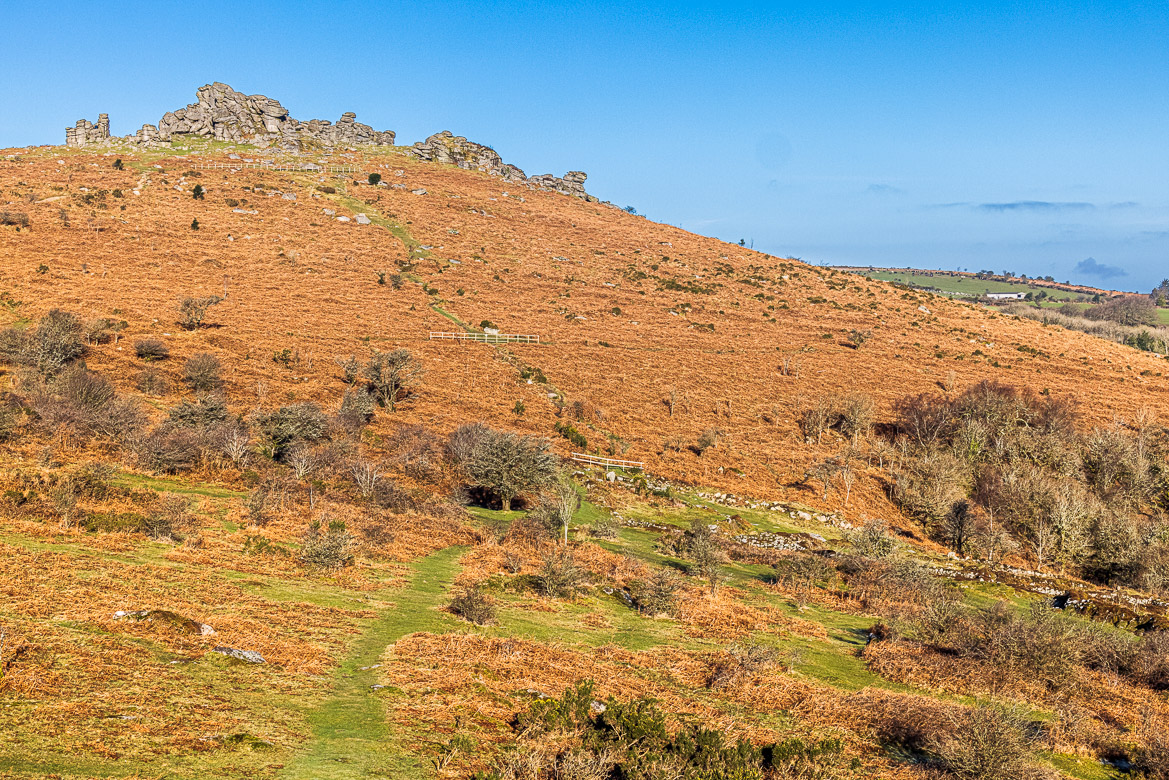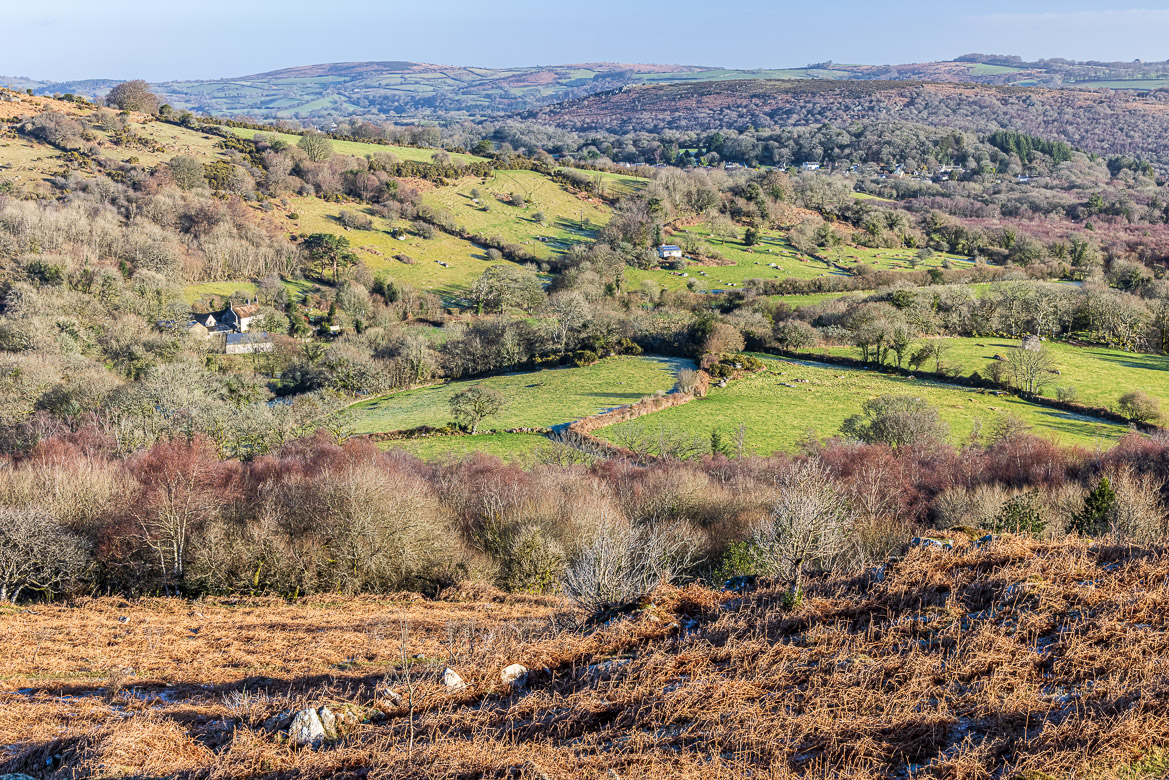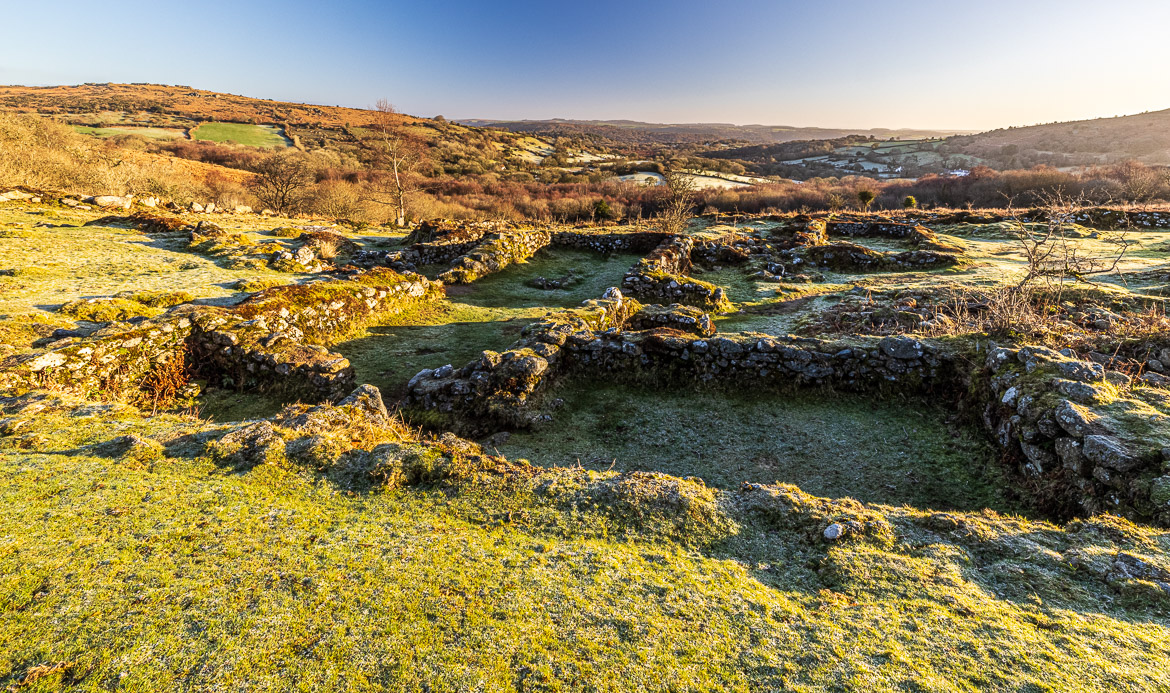
In another Landscape photography post from Dartmoor a week ago I told about Hound Tor and Bowerman who was out hunting with his dogs. That was a legend, but lying beside the beautiful Hound Tor in the valley below is the mysterious and maybe a little bit eerie medieval village of Hundatora, that tells us a true story of farming and hardship in medieval England.
The land around Hound Tor has been farmed since the late Stone Age, and at the time when the Normans conquered England, Hundatora was a big enough settlement to be included in the Domesday Book, which was completed in 1086. At that time there lived 6 households and a few cattle, sheep and goats at Hundatora. Four longhouses have been excavated in the area, and they date from the 13th century.
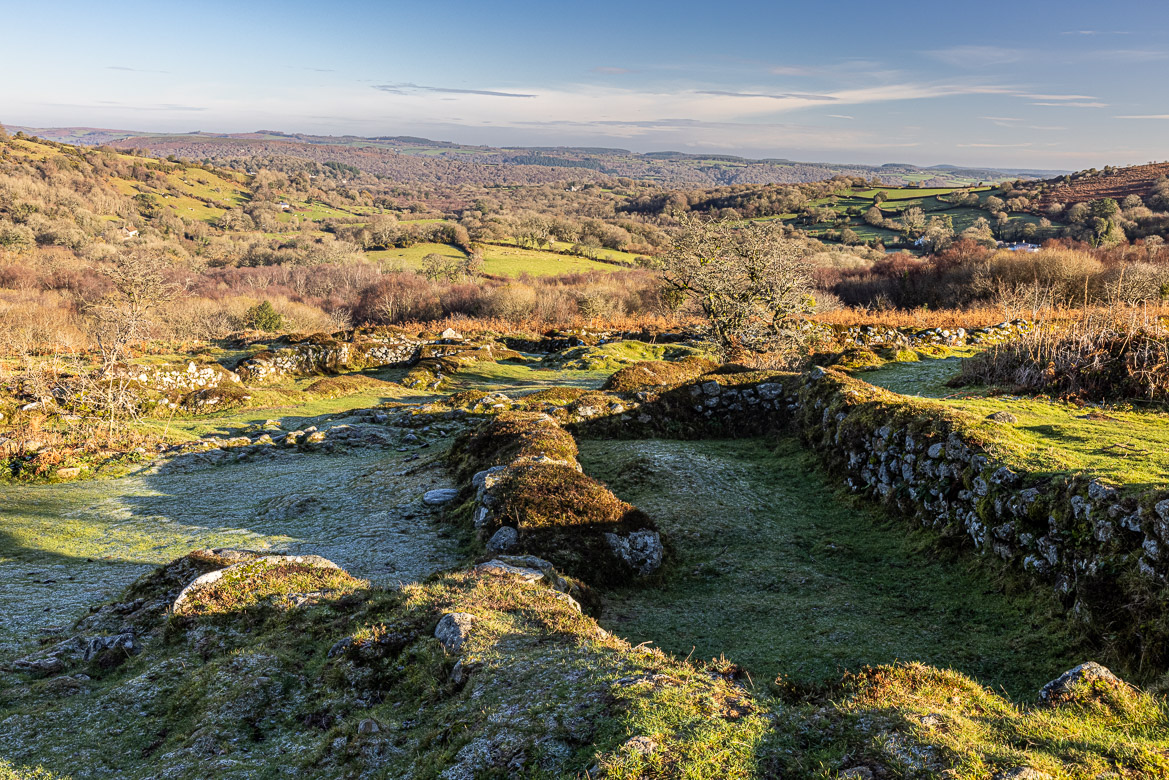
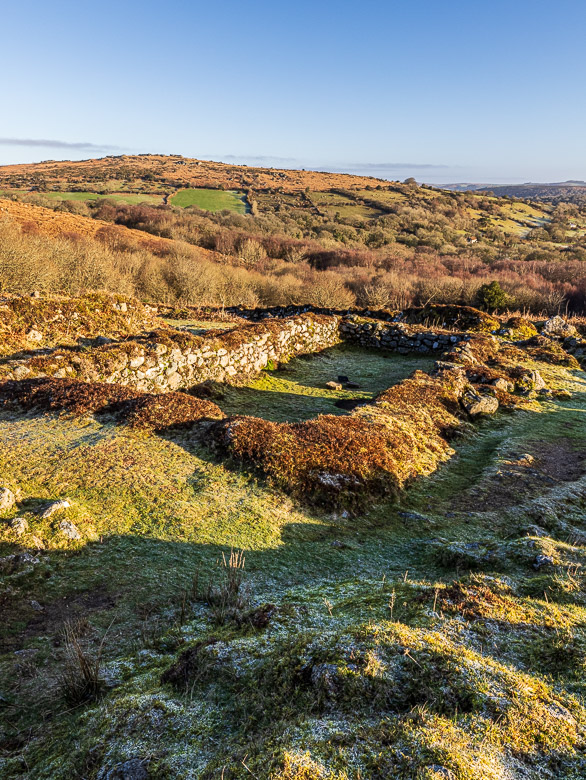
The longhouses were split in two parts, with a passageway in the middle. In one part the humans lived and in the other the animals were housed. They had a fireplace in the middle of the human part of the longhouse, but no chimney. The buildings had thatched roofs, and the smoke had to find its way out through the thatch. Sometimes outbuildings could be attached to or be found beside the longhouses like in the image at the very top.
Medieval time was a period, when it got warmer in England, and people moved up into the higher lying moors. But around the 14th century it got successively colder again and farming became probably too difficult at the Dartmoor highlands. Farming at Hundatora ceased in the late 14th century. Another contributing explanation for the abandonement of Hundatora could be the plague that killed a third of the population of Devon around 1350. It makes us reflect upon our present pandemic, which seems rather mild comparing to the suffering that medieval Europe experienced. Life expectancy during the period of the plague dropped to just 17 years in England.
Next to Hundatora is a smaller tor called Greator. I climbed up there and captured the image below, where Hound Tor is seen at the top and the remains of the medieval settlement is at the bottom right of the picture.
